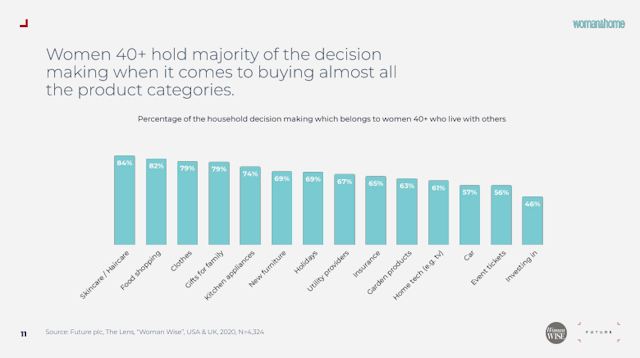Future explains how brands can reconnect with 14m mainstream British women
Publishers frequently discover new audience habits or segments. At Future, however, the work of the data and insights team has rediscovered a valuable and frequently underserved audience – that of mainstream women in the UK.

Future’s research demonstrates an opportunity to better represent women across its portfolio
Future has no dedicated automotive brands. Despite that, its data and insights team have flagged the fact that women are frequently the key decision makers when it comes to purchasing cars, but very rarely represented in automotive marketing.
Richard Thomas, insight director at Future, says that the publisher has a responsibility to bring those uncomfortable statistics to light, even when there is no direct commercial benefit to the company. “We use work like this not just to have a commercial conversation with a brand that we hope to engage with, but to genuinely try and understand. There are millions and millions of people that Future interacts with, and [they] trust our content and come to us because we feel their passions. We have a duty, as we grow, to understand these audiences effectively.”
The research, which focused on women over 40, found that the majority of respondents felt alienated by automotive advertising. 80% said they don’t feel like there are a lot of women in the media who look like them, and 63% of women agree there are too many young-looking women shown in the media.

Worse still, 68% of women believe the image of women in advertising is still very stereotypical. Given Future’s wide portfolio of brands that intersect with women over 40, Thomas believes there is an opportunity there to develop new touchpoints with an audience that would like to be more represented in the media. He says that the industry as a whole “took its eye off the ball” by taking that audience for granted to an extent – which Future is attempting to remedy with its Woman Wise report. “[With] a portfolio as broad as TI Media’s – which has brands like Country Life within it, which we’ll see in our Future brands and Marie Claire and so on – the actual profit driver of the business was often the real-life, women’s weeklies [and] the TV weeklies.
“They made money, they made a profit and I think the compulsion to understand the audience wasn’t really there because the audience was always there. They always bought those magazines and advertisers advertised to them and everybody was happy.”
As a result of that recognition, he says, Future’s Heart of Britain research became a brand in its own right. Conducted by Differentology in partnership with Future, this third iteration focuses specifically on the buying habits of the “forgotten economic powerhouse – mainstream British women.”
Halo effect
That demographic is the biggest single economic group in the UK, made up of 14 million women with a combined income of £351bn. As a result, it’s vital that a publisher like Future, with its suite of titles that intersect with that audience, understands it, even if it doesn’t necessarily cover every topic of interest to them. That has a halo impact within the business more widely – and more importantly, delivers value to any potential brand partners. Thomas explains: “And so that’s where responsibility goes back, in my opinion, to the motor brands. Do they want to have that conversation? Because if they do ... it doesn’t seem to be cutting through with large portions of that female audience. What I like about this is it’s genuine consumer insight in its purest form – there isn’t an agenda here.”
Other findings in the Woman Wise report are that 61% of women agree various racial and ethnic backgrounds should be embraced more in the advertising industry, while 59% of women believe disability is something that should be more welcome in the media. Additionally, 58% of women would like more trustworthy media and 57% want more genuine content.
That presents Future – and other publishers with the ability to conduct wide-ranging reports of this type – with an opportunity to better cater to those audiences. Thomas says: “You tell us that the media doesn’t represent women over 40 in a certain way ... what we’re saying is you’ll become our models for our photoshoots, you will see women just like you, across our portfolio.
“That’s what they’ve done, so that’s a real kind of tangible output from what the audience told us. It’s really the example of insight fueling genuine activity.”
Even if there isn’t a direct commercial advantage to this sort of research, then, there is frequent uplift across a wider portfolio. While Future doesn’t necessarily benefit from highlighting the need for better representation of women in automotive advertising and media, there are societal and commercial imperatives to understand its audience more widely.

